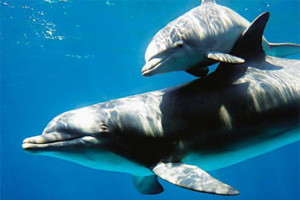One of the main objectives of the observers of the natural world, since well before Aristotle’s time, has been to perceive the order in the diversity of life. One way to achieve order is through taxonomy, which is the classification of organisms.
Taxonomy of organisms is a hierarchical system, in other words, it consists of groups within groups, each being classified at a specific level. In this system, each specific group is called taxa, and the level assigned to it is called category.
Living organisms have been classified into five main groups or kingdoms: Monera, Protista, Fungi (fungi), Plantae (plants) and Animalia (animals).
Categories are set in each kingdom to split the organism into groups according to their differences and similarities. This way, species are grouped into genus, genus into families, families into orders, orders into classes and classes in phyla (plural for the category phylum) or divisions (the categories of division and phylum are the same).
The term division is generally used in the classification of prokaryotes, algae, fungi and plants, while phylum is used in the classification of protozoaries and animals. These categories can be sub-divided further or grouped into a number of categories that are used less frequently, like sub-phylum or superfamily.
For most of us, animal means mammal. However, mammals or even vertebrates as a group (fish, amphibians, reptiles, birds and mammals) represent only a small fraction of the animal kingdom. Over 1.5 million species of different animals have been described, of which 95% are invertebrate, in other words, animals without vertebra.
As an example, let us observe the classification of the human being (Homo sapiens): this species belongs to the Animal Kingdom, which are multicellular organisms that require complex organic substances to feed and they are normally obtained from their food. Within this kingdom, they are classified into the Phylum Chordata, Sub-phylum Vertebrates. The latter are animals with a spinal cord housed within a vertebral column, their body is segmented basically and the cranium contains the brain.
Within the vertebrates, they are grouped into the Superclass Tetrapods (four-limbed terrestrial vertebrates), Class Mammal, whose main characteristics are that their young are mainly nourished through milk-producing glands, the skin has hair and they have an elevated body temperature. The Order Primates belongs within the mammals, and within it, the Family Hominids, which are flat-faced animals, eyes pointing forward, color vision, upright and biped movement. Within hominids is the Genus Homo (large brain, language and prolonged childhood), and within this genus, the species Homo Sapiens, whose characteristics are a prominent jaw, high forehead and scarce body hair.
The hierarchical classification system allows generalizations. Notice how an animal’s classification as a mammal represents a great amount of information. Also notice that descending from kingdom to species increases details, because there is a progression from general to specific. Summing up, hierarchical classification is a very useful method for storing and providing information.





